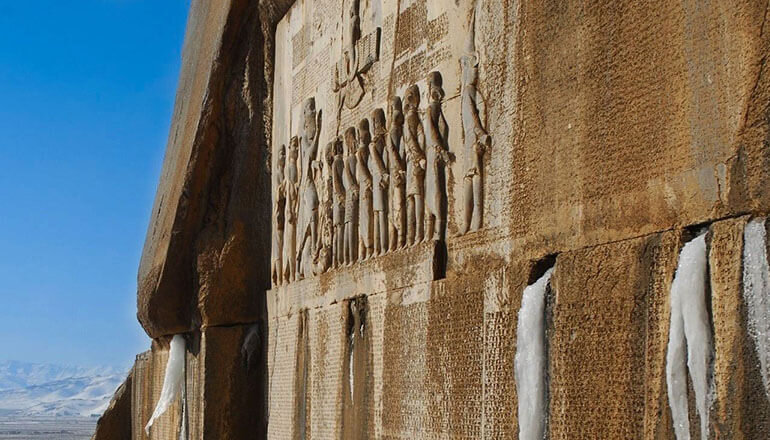INSUBCONTINENT EXCLUSIVE:
patchwork of immense yet impressive life-size carvings depicting king Darius I and several other figures.The area was on the ancient trade
route linking the Iranian high plateau with Mesopotamia and contains remains from prehistoric times to the Median and Achaemenid eras.The
principal monument of this archaeological site is the bas-relief and cuneiform inscription ordered by Darius the Great shortly after he
ascended to the throne of the Persian Empire in 521 BC.The bas-relief portrays Darius holding a bow, as a sign of sovereignty and treading
on the chest of a figure who lies on his back before him
to power.Below and around the bas-reliefs, there are about 1,200 lines of inscriptions telling the story of the battles Darius waged in
521-520 BC against the governors who attempted to take apart the empire founded by Cyrus.The inscription is written in three languages
The oldest is an Elamite text referring to legends describing the king and the rebellions
This is followed by a Babylonian version of similar legends
The last phase of the inscription is particularly important, as it is here that Darius introduced the Old Persian version of his res gestae
(things done).This is the only known monumental text of the Achaemenids to document the re-establishment of the empire by Darius I
It also bears witness to the interchange of influences in the development of monumental art and writing in the region of the Persian Empire
There are also remains from the Median period (8th to 7th centuries BC) as well as from the Achaemenid (6th to 4th centuries BC) and
post-Achaemenid periods.UNESCO has it that Bisotun bears outstanding testimony to the important interchange of human values in the

